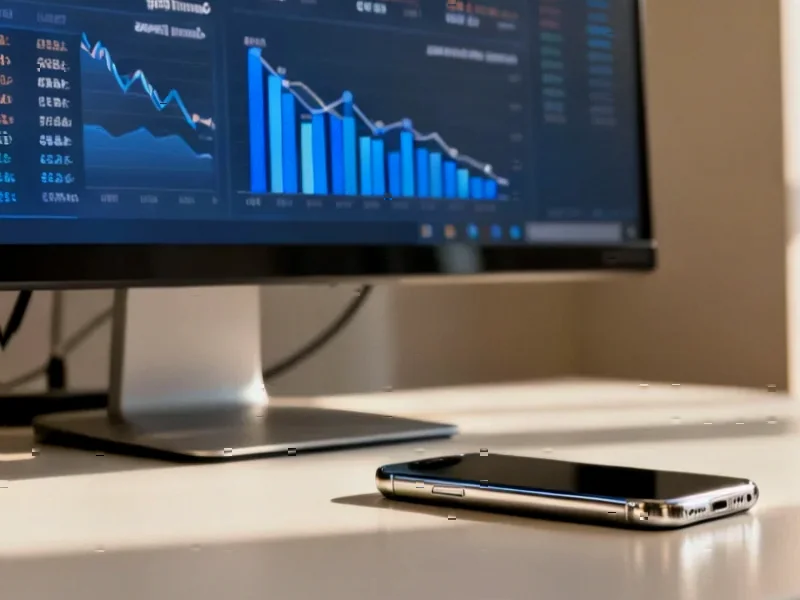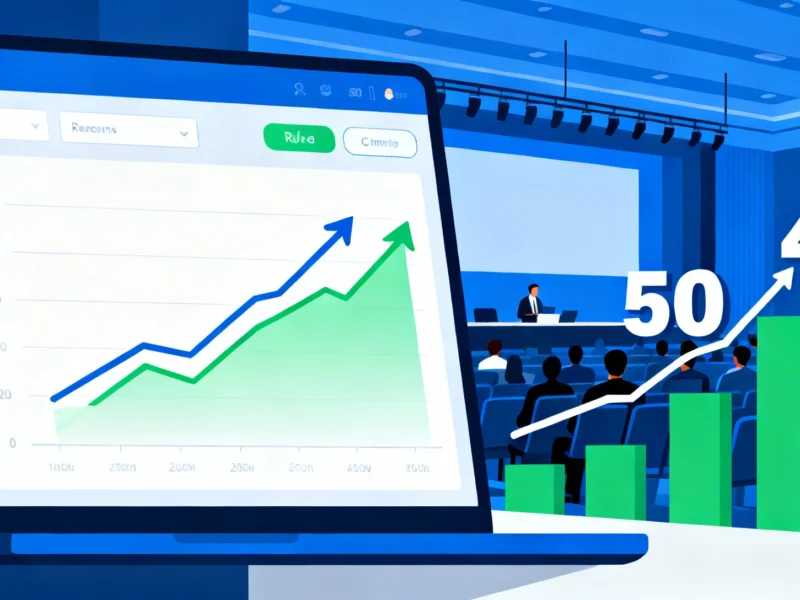According to CNBC, Apple’s fiscal fourth-quarter earnings and revenue beat expectations, sending shares up nearly 2% in premarket trading Friday. The strong performance was largely driven by exceptional demand for the iPhone 17, which launched in September, with CEO Tim Cook projecting 10-12% year-over-year revenue growth for the December quarter that would make it “the best ever in the history of the company.” Multiple Wall Street firms responded by hiking price targets, including Evercore ISI to $300, JPMorgan to $305, Citi to $315, Goldman Sachs to $320, and Bank of America to $325, while UBS maintained a neutral rating with a more modest $280 target. Cook specifically highlighted “off the chart” reception for the new iPhone 17 devices and projected double-digit iPhone revenue growth alongside approximately 14% Services growth for the coming quarter.
Table of Contents
The Supply Constraint Paradox
What’s particularly telling about Apple’s current position is that the iPhone revenue actually slightly missed some analyst expectations despite overwhelming demand. This paradox reveals a company constrained by its own success – the iPhone 17 is selling faster than Apple can manufacture it, with channel inventories declining quarter-over-quarter. While supply constraints typically signal operational challenges, in Apple’s case they indicate pent-up demand that could drive multiple quarters of sustained growth as production catches up. This situation creates a natural hedge against economic uncertainty, as Apple essentially has guaranteed sales waiting in the pipeline regardless of broader market conditions.
The Services Margin Expansion Story
Beyond the iPhone momentum, the real structural story for Apple remains its services business, which grew approximately 14% year-over-year and helped drive better-than-expected gross margins of 47.5%. As Tim Cook has strategically shifted Apple Inc. toward higher-margin recurring revenue streams, the company is building an economic moat that protects profitability even during hardware transition periods. The services segment now acts as both a growth engine and margin stabilizer, creating a virtuous cycle where each new iPhone sold expands the installed base that fuels future services growth. This dual-engine approach gives Apple unusual resilience compared to pure-play hardware competitors.
What’s Driving Analyst Confidence
The unanimous analyst upgrades from firms including JPMorgan Chase and others reflect several converging factors beyond just current iPhone performance. First, the guidance suggests Apple has successfully navigated tariff reductions in China from 20% to 10%, providing immediate margin relief. Second, the projected earnings per share of $2.65 for the December quarter significantly outpaces street expectations of $2.54, indicating operational efficiency gains. Third, and most importantly, analysts see 2026 shaping up as a potential super-cycle year with multiple major product launches including an AI-enhanced Siri, a foldable iPhone, and Vision Pro 2 creating overlapping upgrade catalysts.
The Changing Competitive Landscape
Apple’s strong performance comes at a critical juncture in the smartphone industry. While competitors have largely focused on incremental hardware improvements, Apple appears positioned to leverage its integrated ecosystem and upcoming AI capabilities to create meaningful differentiation. The anticipated 2026 AI-enabled Siri represents Apple’s answer to the generative AI race, while a potential foldable iPhone would mark the company’s entry into the fastest-growing premium smartphone segment. This product roadmap suggests Apple is playing a longer strategic game rather than reacting to quarterly competitive pressures.
Hidden Risks and Challenges
Despite the overwhelmingly positive analyst response, several risk factors merit consideration. The 27% increase in R&D spending for FY26 indicates significant investment requirements for AI development, which could pressure profitability if not matched by revenue growth. Additionally, while China sales are expected to improve year-over-year, the region remains a geopolitical wildcard that could disrupt Apple’s supply chain or market access. The company’s guidance also assumes no impact from rising commodity prices, particularly memory, which could prove optimistic given global inflationary pressures. Finally, the high analyst price targets already bake in substantial execution success across multiple new product categories simultaneously.
Long-Term Strategic Implications
Looking beyond the current quarter, Apple’s performance suggests the company is successfully navigating the transition from a product company to an ecosystem company. The ability to drive both hardware innovation and services growth creates a sustainable competitive advantage that’s difficult for competitors to replicate. The projected multi-year product cycle strength indicates that Apple’s strategy of timing major innovations to drive sequential upgrade waves is working effectively. As the company approaches potential new category entries in foldables and advanced AR/VR, it does so from a position of financial strength that allows for patient, strategic investment rather than desperate category creation.
Related Articles You May Find Interesting
- Disney’s YouTube TV Blackout Signals Streaming’s New Reality
- NVIDIA and Samsung’s AI Factory: The New Arms Race in Chip Manufacturing
- Pony.ai’s Shenzhen Breakthrough: China’s Robotaxi Revolution Begins
- Emerson’s Valve Upgrade Signals Industrial Safety Revolution
- Apple’s $50 Stock Boost Masks Deeper AI Challenges



